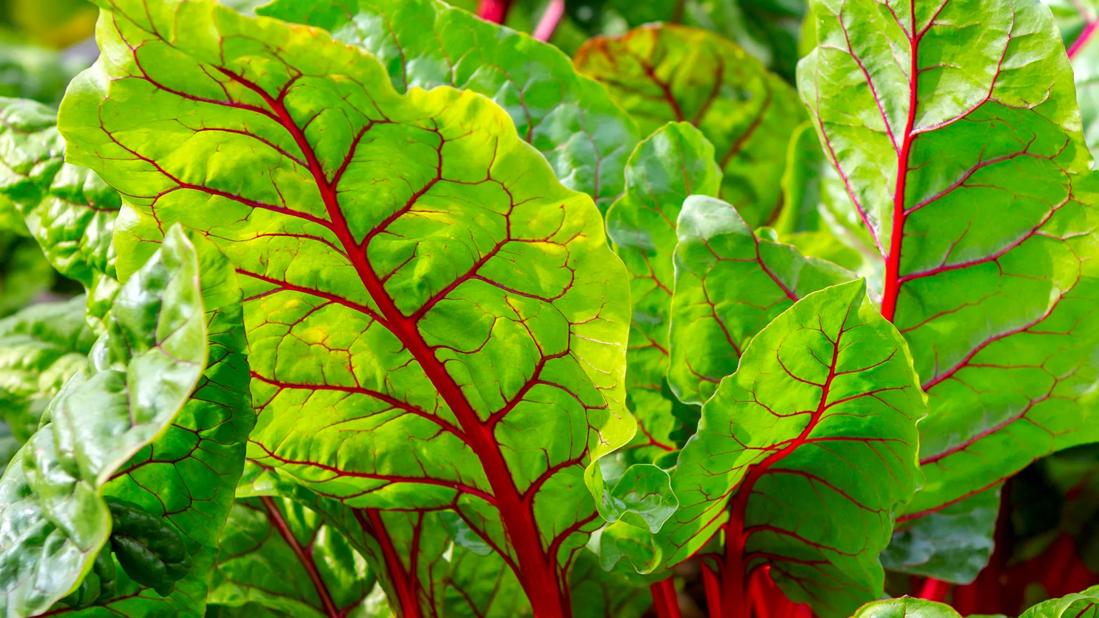This leafy green can aid weight loss, boost eye health and help prevent cancer

When you think of leafy greens, you probably think of spinach and kale. But Swiss chard (or chard) is also a vitamin and mineral powerhouse. Swiss chard is a relative of spinach and beets — but unlike beets, Swiss chard doesn’t have an edible root. Instead, you can enjoy its leaves and colorful stems.
Advertisement
Cleveland Clinic is a non-profit academic medical center. Advertising on our site helps support our mission. We do not endorse non-Cleveland Clinic products or services. Policy
“The leaves of Swiss chard taste a lot like kale and stand up well to light cooking,” says registered dietitian Natalie Crtalic-Lowther, RD, LD. “The stalks have a celery-like taste and texture.”
“Swiss chard is packed with vitamins, minerals and phytonutrients,” says Crtalic-Lowther. A one-cup serving of cooked Swiss chard contains:
Swiss chard also contains:
Swiss chard is no slouch when it comes to improving your health. Its potential benefits include:
If hunger is standing in the way of weight loss, add some Swiss chard to your healthy eating plan.
“Swiss chard and other vegetables are among the best foods to help you lose weight because they’re low-calorie and high in fiber,” says Crtalic-Lowther. “Studies show that fiber helps you feel full without causing a rapid rise and fall in your blood sugar that can make you hungry.”
Advertisement
Swiss chard contains antioxidants like vitamins C and A, which can help reduce atherosclerosis, or hardening of your arteries.
“Atherosclerosis is a leading cause of heart attack and stroke,” says Crtalic-Lowther. “But a healthy diet with leafy green vegetables like Swiss chard can help you reduce this risk.”
Research also shows the fiber in chard may help ward off heart disease.
“U.S. adults aren’t getting enough fiber, and Swiss chard is an excellent source,” she adds. “A high-fiber diet can help lower your cholesterol and blood pressure, which are two major risk factors for heart disease. With Swiss chard, you’re also getting that fiber with fewer calories and plenty of other vitamins and minerals.”
Chard contains lutein and zeaxanthin, two important nutrients for healthy eyes.
“Studies have shown that lutein and zeaxanthin can help prevent age-related macular degeneration, which is a top cause of vision loss,” notes Crtalic-Lowther. “Your body can’t make these nutrients, so you must get them through your diet.”
The fiber in Swiss chard has yet another benefit: It can reduce insulin resistance.
“Insulin resistance is a risk factor for Type 2 diabetes,” explains Crtalic-Lowther. “Eating high-fiber, nutrient-dense vegetables instead of processed foods that are higher in sugar can lower this risk. The right diet can even reverse prediabetes in some cases.”
Quercetin is yet another antioxidant you’ll find in Swiss chard, and it could help ward off certain types of cancer.
“While no food can guarantee you won’t get cancer, eating a diet rich in fruits and vegetables is an effective way to lower your risk,” says Crtalic-Lowther.
Lightly cooked Swiss chard is as nutritious as raw chard, as long as you don’t overdo it.
“Boiling Swiss chard for more than a few minutes may deplete some of its nutrients,” warns Crtalic-Lowther. “Boil it just until it’s softened, or saute or steam it for the most nutritional punch.”
You can safely eat Swiss chard raw if you like, but there’s a reason you don’t often see it at salad bars.
“When you eat it raw, Swiss chard has a slightly bitter taste,” says Crtalic-Lowther. “It’s also not as tender as spinach. But with a quick sauté or boil, Swiss chard makes for a pleasantly mild, tender and colorful side dish.”
The simplest way to enjoy chard is by sautéing it:
Advertisement
Crtalic-Lowther likes to sauté Swiss chard with olive oil, garlic and lemon.
Need some creative ideas for serving up this superfood? Try these recipes:
Most people can safely add Swiss chard to their diet without issues. But note these precautions if you:
Swiss chard has impressive health benefits, but it’s not an all-in-one food. Even the healthiest food in the world can’t give you all the vitamins and nutrients you need.
“Focus on eating a balanced diet that includes a variety of colorful fruits and vegetables, along with whole grains and lean protein. That can include Swiss chard or other leafy greens, depending on your tastes,” recommends Crtalic-Lowther.
Advertisement
And if you need help figuring out the best diet for you, talk to a healthcare provider.
“If you have health conditions or need support with your diet, your healthcare provider may refer you to a registered dietitian,” says Crtalic-Lowther. “They can help you create an eating plan that suits your health needs and tastes so you can stick with it.”
Advertisement
Learn more about our editorial process.
Advertisement

This starchy root vegetable is a staple in many global cuisines — but it has to be prepared correctly, or it can cause serious concerns

These delicate green sprouts can give you an extra dose of vitamin K and other nutrients — but they’re not safe for everyone

Edamame, lentils and chicken breast are good sources of protein

The flavorful herb is full of antioxidants that may help regulate blood sugar

High in antioxidants and vitamin C, kohlrabi lowers disease risk, protects your heart and aids digestion

The gluten-free, fiber-rich superfood supports gut and heart health and can help with diabetes management

Wasabi root may protect against cancer, food poisoning and memory loss

Limes and lime juice are rich in vitamins, minerals, antioxidants and other nutrients

Start having sex about 72 hours before ovulation, then at least every other day during your fertile window

Attachment theory suggests that your earliest relationships shape connections throughout your life

It isn’t a recognized mental health disorder, but research shows that problematic social media use can negatively affect your mental health, self-esteem and sleep